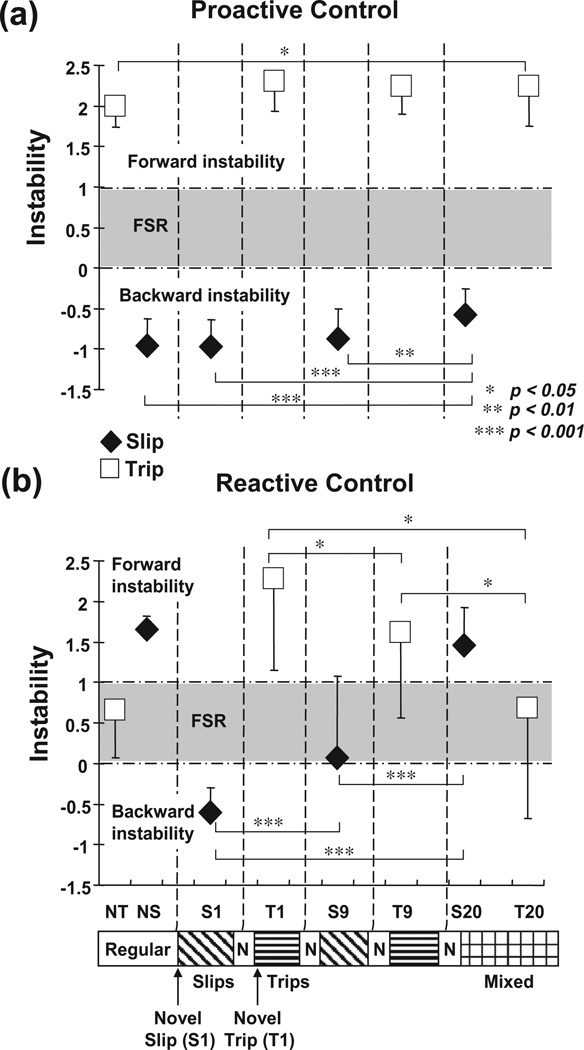Fig. 10.
Shown are group means (±SD) of adaptive changes in (a) pre-slip/trip stability and (b) post-slip/trip stability on selected trials of slips (S1, S9, S20) and trips (T1, T9, T20) for the training group. Stability during a slip (backward stability) was measured as the shortest distance between the instantaneous COM state and predicted FSR limits for backward loss of balance under slip conditions. Stability during a trip (forward instability) was measured as the shortest distance between the instantaneous COM state and predicted FSR limits for forward loss of balance under non-slip conditions. Stability value of greater than 1 indicated less stability against forward balance loss; stability value between 0 and 1 indicated that the COM state was within the FSR. Stability value of less than 0 indicated that the COM state fell outside of the FSR where backward balance loss was predicted. NS represented the data for the regular walking trial prior to the first novel perturbation (i.e., S1), and its pre- and post-slip data were obtained respectively at leading/ slipping foot (i.e., right foot) and left foot touchdown. NT represented the data for the regular walking trial prior to S1, and its pre- and post-trip data were obtained respectively at 30 ms prior to the time when the left toe marker was right above the erect plate and left foot touchdown. *p < 0.05; **p < 0.01; ***p < 0.001.

